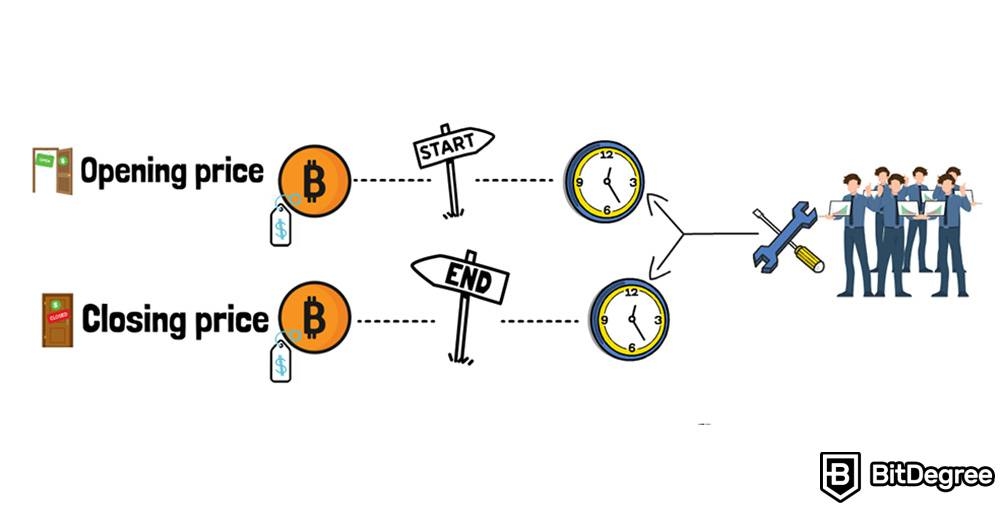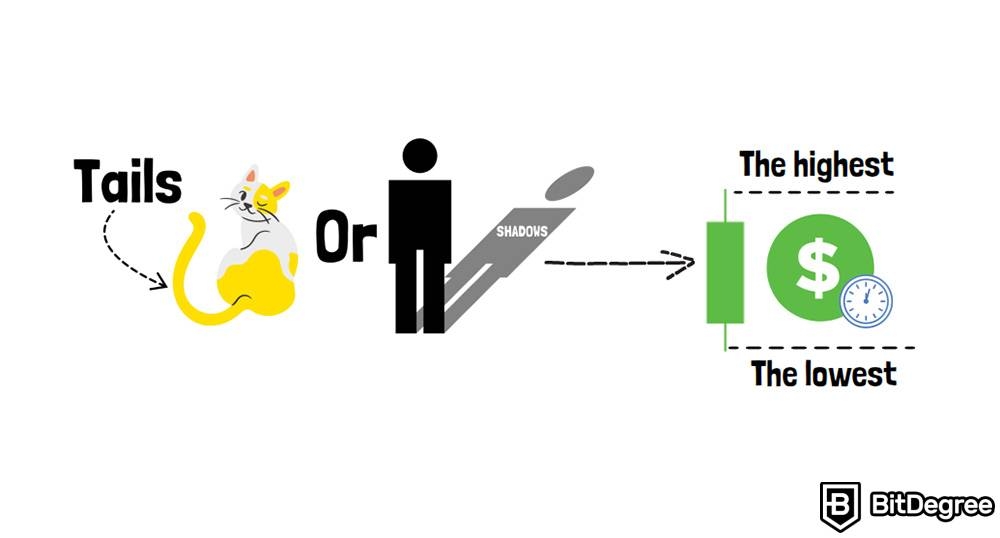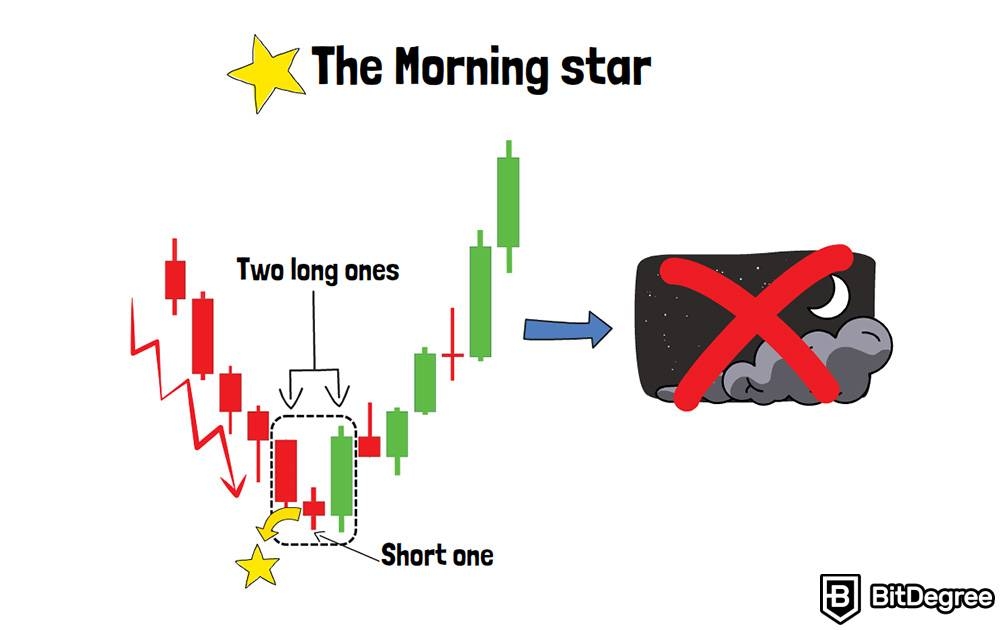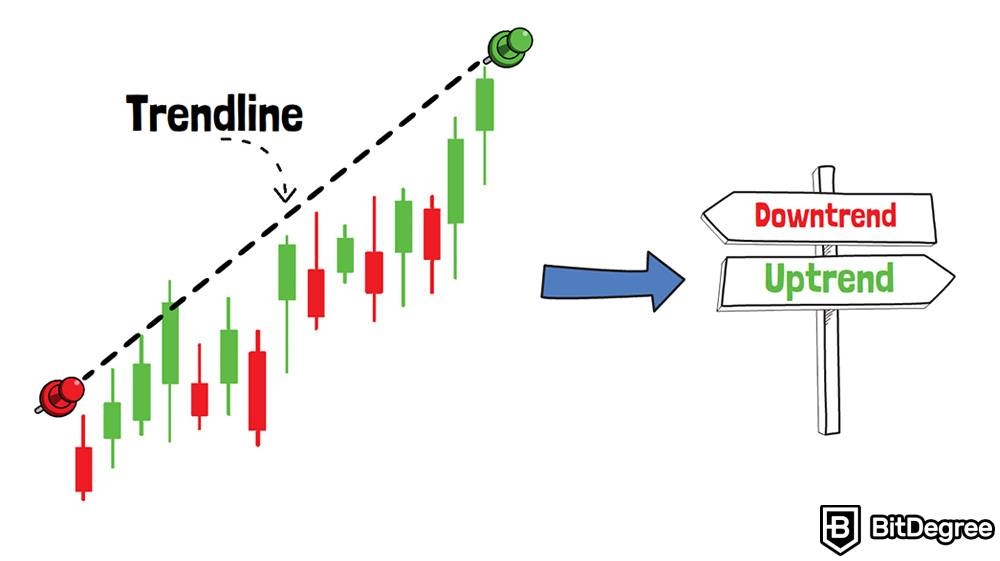Technical Analysis: What are Candlesticks, Trendlines, and Patterns?
In this section, we’re going to dive into crypto technical analysis and face the scary question of what is ‘candlesticks, patterns and trendlines.’
For beginners, the sight of candlestick charts is not a pleasant experience. It looks colorful, confusing, and very complex. Nothing makes sense, and everything seems to be of crucial importance. But knowing how to read candlesticks is in itself like a candle - it can shine a light in the darkness of uncertainty!
Once a trader learns how to access and understand this information, new possibilities get unlocked. That’s what I’m here for - to give you the essentials of this topic, so you could literally level up your trading game.
In this section, we’re going to answer the questions of what is ‘candlesticks’ and how to read them, what is ‘trendlines’, and patterns, and other related, yet problematic for many, concepts. By the end of your reading, you’ll no longer fear those red-and-greenish charts!
What are Candlesticks?
To start off, candlesticks, these confusing-looking colorful rectangles, are the poster boy for crypto technical analysis. It only makes sense to begin by explaining what ‘candlesticks’ is, the theory of how to read them, and what their purpose is.

First of all, they’re called candlesticks because… They resemble candlesticks. But if only things were that simple!
Crypto candlesticks are a technical analysis tool that allows traders to observe cryptocurrency price movements over a given period of time. It’s a visual representation of these price movements, and it allows traders to immediately tell the ongoing trends, and identify if there’s a pattern in them.
Of course, crypto is known for how volatile its market is. Sudden changes in price movement can appear very quickly. Therefore, candlesticks are used to represent a certain time period and the change that happened during it. Different people use candlesticks to track different time periods. Among popular options, they can range from 1 minute to 1 month.
Now, let’s take a look at how to read candlesticks.
First of all, candlesticks come in two colors. Green and red.
A red candlestick means that the cryptocurrency’s price decreased during the set trading period. To be more precise, it shows that the crypto’s closing price was lower than the opening price.
A green candlestick means that its price increased during the same set trading period. Similarly, it shows that the coin’s closing price was higher than the opening price.
To comprehend this better, it’s crucial to have a clear understanding of what ‘opening’ and ‘closing’ prices are.

The opening price is the price of a coin at the start of a particular time period. The closing price, naturally, is the price of the coin at the end of that time period. These time periods are set manually, and depend on what traders are interested in.
Here’s an example. Right now, Bitcoin’s price is different than it will be by the time you finish reading this section. So, a candlestick would represent Bitcoin price movement during these minutes - what was its price when you began reading this section, and how did it look by the end of your reading. If the price increased, the candlestick would be green, and it would be red if it had gone down.
But what are those little wicks on the top and bottom of each of the candlesticks?
Also known as tails, or shadows, the candlestick wicks represent the highest and lowest price points reached during the time period.

You’ll easily notice that most of these wicks differ in length. Let’s say you see a red candlestick with the wick on the top of it being longer than the one on the bottom. This shows that the particular crypto’s price reached a high point during the set time period, but, at the end of it, it fell back down, and the closing price was lower than the opening one.
Now, if the wick on the bottom of a candlestick is longer, this signifies the opposite. It shows that the asset's price fell significantly low during the set time period, but, eventually, recovered, and its closing price was higher than the opening price. Therefore, such a candlestick would be green.
Simply put, knowing how to read candlesticks allows traders to plan their next move. Thanks to this method, they can recognize potential asset's price patterns, and therefore, make more informed decisions.
But what is ‘patterns,’ actually, and how to recognize them?
What are Patterns?
In the context of crypto, patterns refer to specific shapes within a price chart that are recurring from time to time. They suggest what the prices may look like in the near future, based on how they’ve looked in the past. It’s the crypto version of noticing repetitive, cyclical patterns of behavior.

So, candlestick patterns are exactly that. Various cryptocurrency prices behave rather unpredictably, but, nevertheless, patterns appear. And, when visualized in the shape of candlesticks, it becomes a powerful tool for traders to scan the market sentiment, feel its momentum, or look out for bearish and bullish signals.
By the way, if you want to learn more about what those bearish and bullish signals are, check out this section that is explaining exactly that!
Okay, so back to candlestick patterns. Let’s take a look at some well-known patterns that every serious trader could recognize in a second. Specifically, let’s begin with a few notable bullish patterns.
First, The Hammer Pattern. It’s called that because this candlestick looks more like a hammer than a candle. It’s a famous bullish reversal pattern which is formed at the bottom of a downtrend. So, whenever traders notice it, they can predict price movement with more certainty.
Another bullish pattern is known as the Bullish engulfing. It’s called that because it’s formed when a bullish candlestick engulfs the previous bearish candlestick. It’s a bullish pattern, because it suggests that a price increase is on its way.
The Morning star is yet another important bullish pattern. It’s formed by three candlesticks: one short candle between two long ones. The way this pattern is called implies that the short-bodied candle is the star that is rising, and thus, ending the night, a.k.a. a downwards trend.

Now, let’s take a look at some bearish candlestick patterns.
The opposite of The Hammer is known as the Hanging man: Even though it looks like a hammer, it signifies the opposite - a potential reversal of the price movement. Unlike the Hammer, this pattern is formed at the top of an uptrend.
In contrast to Bullish engulfing, there’s also Bearish engulfing: They are the opposites of each other. Bearish engulfing forms when a bearish candlestick entirely engulfs the previous bullish candlestick.
Finally, the Evening star: Once again, it’s the opposite of the Morning star. It consists of three candlesticks, yet with their meanings inverted. Thus, the Evening star pattern suggests that the day, a.k.a. an uptrend is coming to an end, and it's about to get dark. But experienced traders are not afraid of it - they know they can light their way using candles.
What is a Trendline?
But candlestick charts have even more potential. Apart from forming patterns that help traders navigate through the sea of uncertainty, they also provide data so that trendlines could be drawn.
But, what is ‘trendlines’?
Just like patterns, trendlines are a useful technical analysis tool that helps traders to weigh in various trading decisions. Yet, these two tools serve different purposes!

When you connect the high or low points of candlesticks with a straight line, you end up with a trendline.
Its main purpose is to identify the direction of the trend, whether it is an uptrend or a downtrend.
For example, a trendline, that’s drawn by connecting the lowest points of candlesticks, is referred to as support. It’s a level below which the price is not expected to drop even lower. Therefore, knowing at what price the support level is, allows traders to evaluate the situation of various coins in more precise values.
Analogically, a trendline connecting highs is referred to as resistance. It marks a level above which the price is not predicted to rise. So, thanks to trendlines, traders are able to avoid such emotions as FUD or FOMO, because if they’re aware of the price’s resistance level, no rumors are going to convince them to jump on any bandwagon without any critical evaluation of their decision.
By the way, if you want to learn more about what role emotions play in the crypto market, be sure to check out this section!
So, trendlines help traders recognize in what direction the market is currently going. Meanwhile, candlestick patterns allow them to identify likely changes in those trends. Quite obviously, these tools are supplementary to each other, and it’s not a surprise that most professional traders use them both.
Wrapping Up
Having said that, it’s time to call it a wrap. I hope that with all this new information, the question of what is ‘candlesticks’ has become clear as day! And, that the questions of what is 'patterns' and what is 'trendlines' have been answered as well. Overall, these terms should become part of your vocabulary, and, eventually, second nature.









